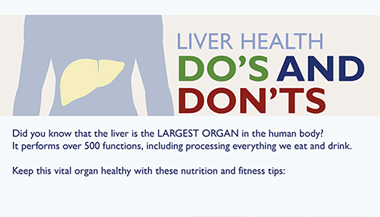Liver Conditions in Children
Acute Liver Failure
This alarming syndrome usually occurs in a previously well infant, child or adolescent and can be caused by a number of infectious or metabolic causes and reactions to medication.
Jaundice occurs rapidly, often in concert with gastrointestinal symptoms like vomiting and fever.
We are committed to serving children with this disorder as soon as we are notified and work with our emergency transport team, intensive care specialists and if necessary, our pediatric liver surgeons to provide 24-hour care for the best outcome possible for children with this condition.
What is alpha-1 antitrypsin deficiency?
Alpha-1 antitrypsin (A1AT) deficiency is an inherited disease in which a protein known as A1AT is unable to be released from the liver into the blood in adequate amounts. This causes a deficiency of the A1AT protein in the circulation. A1AT is a specialized protein that blocks the action of other proteins important in inflammation (swelling) and breakdown of tissues in the body. When the A1AT protein is deficient in the circulation, tissue inflammation and tissue damage is more severe, especially in the lungs. The defective A1AT protein that remains in the liver may cause liver inflammation (hepatitis) that can progress to cirrhosis (permanent liver scarring) and liver failure.
A1AT deficiency is quite common, with about 1 in 1,500 to 2,000 people affected. Both parents must be carriers of the genetic defect to have a child with A1AT deficiency. Although carrier parents partially produce the abnormal A1AT protein, they usually have no — or very minimal — symptoms and they may not realize they are partially affected until their child is diagnosed with the condition.
Symptoms
About 10 percent of newborns with liver disease will be diagnosed with A1AT deficiency. Newborns may develop jaundice as part of inflammation of the liver associated with A1AT deficiency. Older children and teens can present with a liver that has been inflamed for a long time, causing scarring (cirrhosis) to develop. Lung disease usually develops only in adulthood. Adults with A1AT deficiency may have difficulties with chronic obstructive pulmonary disease (COPD), emphysema, chronic bronchitis, asthma, coughing and repeated lung infections.
Diagnosis
Testing is usually done when a child has liver inflammation of uncertain cause or when a family history suggests A1AT liver disease. The standard screening test is to measure the amount of A1AT protein in the circulation. In cases of A1AT deficiency, the serum A1AT level will be low. When a low A1AT level is found, an additional test is usually done to identify the types of abnormal A1AT proteins that are in the circulation. In rare cases, a more detailed analysis of the DNA in the gene may be necessary.
The amount of liver swelling and damage can be assessed by ultrasonography (sonogram) of the abdomen, blood tests of liver inflammation and function and a liver biopsy, where a small piece of liver tissue is obtained and then examined under the microscope to search for changes typical of A1AT deficiency.
Treatment
There is no cure for A1AT deficiency. Therapy involves controlling symptoms and attempting to prevent the development of complications. To protect their lungs, it is very important that the affected person and those around them not smoke. Vaccinations to protect against viruses, such as hepatitis A and hepatitis B, that can further damage the liver should be given. It is difficult to predict how severely a liver will be affected. Liver function tests are followed over time. Some patients may have minimal liver disease during their entire lifetime; however, a small number will eventually require liver transplant.
Cirrhosis or Chronic Liver Failure
Cirrhosis or chronic liver failure can be caused by a number of the liver and biliary diseases listed in Clinical Services or sometimes appear without known cause. Our approach to pediatric patients with this problem is to start with a thorough history and physical examination and nutritional assessment.
We also have a frank discussion with the patient and family about what is involved in the evaluation for a life-saving liver transplant.
Liver Cyst or Tumor
There are multiple benign and malignant malformations or tumors that can occur in the liver of a child.
Our approach begins with a thorough review of medical records and imaging studies. We work closely with our interventional radiologists and surgeons to establish an accurate diagnosis as quickly as possible.
If the diagnosis is a malignant tumor, then we work with the pediatric oncologists and pediatric surgeons to decide the very best approach, which may include chemotherapy, radiation, embolization, surgical removal and/or liver transplantation.





